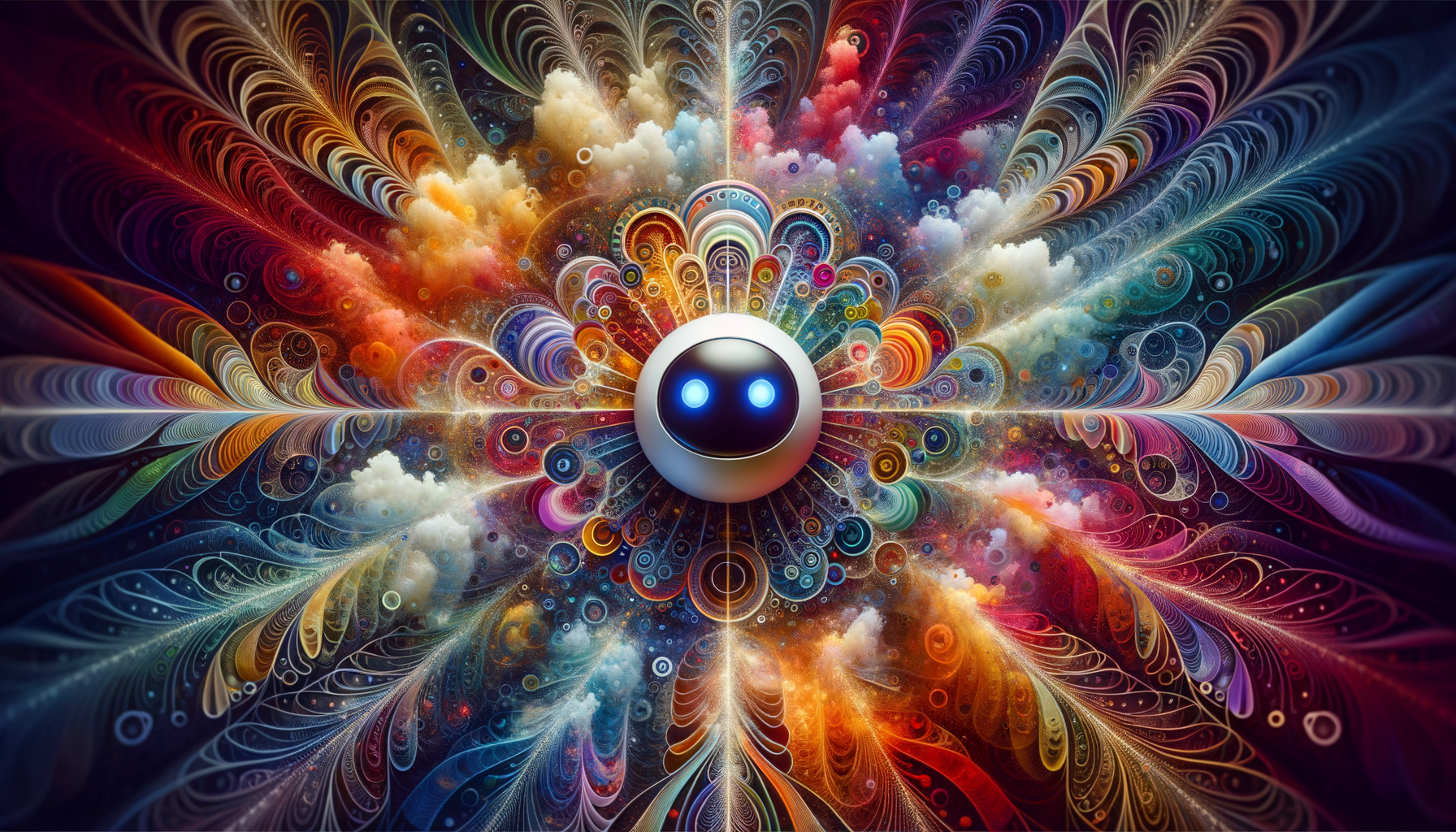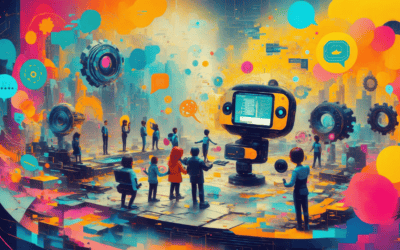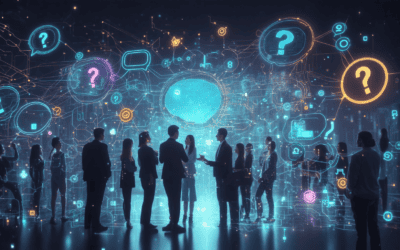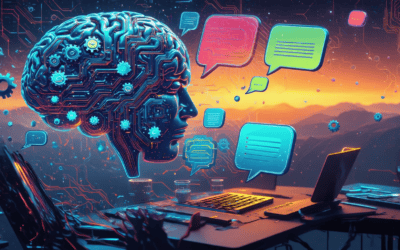In today’s fast-paced digital landscape, providing exceptional customer service is paramount for businesses to thrive. As customers increasingly expect prompt, personalized assistance across multiple channels, intelligent service bots have emerged as a game-changer. These AI-powered virtual assistants offer a seamless and efficient way to handle customer inquiries, troubleshoot issues, and deliver tailored support around the clock. From industry giants to innovative startups, companies are leveraging the power of customer service bots to elevate their customer experiences, streamline operations, and gain a competitive edge. In this comprehensive guide, we’ll explore the world of customer service bots, delving into their benefits, key features, implementation strategies, and real-world success stories from trailblazing brands like Brother and iRobot.
I. How to make a customer service bot?
A. Understanding the Need for Customer Service Bots
In today’s fast-paced business landscape, providing exceptional customer service is paramount for any organization aiming to establish a strong brand presence and foster long-lasting relationships with its clientele. However, the ever-increasing volume of customer inquiries and the need for prompt responses can strain even the most dedicated support teams. This is where customer service bots come into play, offering a game-changing solution to streamline communication and elevate the overall customer experience.
Powered by advanced artificial intelligence (AI) and natural language processing (NLP) technologies, customer service bots are designed to mimic human-like conversations, allowing them to comprehend and respond to customer queries accurately and efficiently. By automating routine inquiries and tasks, these intelligent bots alleviate the burden on human support agents, enabling them to focus their efforts on more complex and high-value interactions.
The integration of customer service bots not only enhances operational efficiency but also provides numerous benefits to both businesses and customers. For businesses, these bots offer cost-effective solutions, reduce response times, and ensure consistent service quality across all touchpoints. Customers, on the other hand, appreciate the convenience of instant support, available 24/7, without the need to navigate complex phone trees or endure lengthy wait times.
B. Selecting the Right AI Chatbot Platform
With the ever-growing popularity of customer service bots, numerous AI chatbot platforms have emerged, each offering a unique set of features and capabilities. Choosing the right platform is crucial to ensure seamless integration, scalability, and long-term success. When evaluating potential platforms, it’s essential to consider factors such as ease of deployment, integration capabilities, natural language understanding (NLU) and natural language generation (NLG) proficiency, multilingual support, and ongoing maintenance and training requirements.
Industry leaders like IBM Watson Assistant, Google’s Dialogflow, and Microsoft Bot Framework offer robust and scalable solutions tailored to meet the diverse needs of businesses across various industries. Additionally, platforms like Chatfuel and ManyChat provide user-friendly interfaces and streamlined deployment processes, making them attractive options for businesses seeking a more accessible entry point into the world of customer service bots.

II. What is the best AI chatbot for customer support?
A. Top Customer Service Chatbot Examples
In the ever-evolving landscape of customer service, AI-powered chatbots have emerged as game-changers, revolutionizing the way businesses interact with their customers. As companies strive to provide exceptional support experiences, the integration of cutting-edge chatbot technology has become a strategic imperative. Among the myriad of customer service chatbot examples, a few standout solutions have risen to the forefront.
One of the most prominent names in this space is Freshchat by Freshworks, a comprehensive platform that combines advanced natural language processing (NLP) with omnichannel support capabilities. Freshchat seamlessly integrates with Freshworks’ CRM suite, enabling businesses to automate routine queries while delivering personalized experiences that elevate customer satisfaction.
Another trailblazer in the AI chatbot realm is Ada, a no-code platform that empowers businesses to build highly customizable chatbots with robust NLP capabilities. Ada’s automated training and conversation tracking features, coupled with in-depth analytics, provide businesses with valuable insights to continuously optimize their customer support strategies.
For those seeking a conversational marketing approach, Drift stands out as a compelling solution. Drift’s chatbot not only offers a seamless handoff to human agents when necessary but also integrates seamlessly with various CRMs, providing robust analytics to measure and refine customer engagement efforts.
B. Evaluating Chatbot Features for Customer Support
When evaluating the best AI chatbot for customer support, it’s crucial to consider the unique needs and requirements of your business. The answer to the question “What is the best AI chatbot for customer support?” ultimately depends on various factors, including business requirements, integration capabilities, and budget.
Here’s a comprehensive analysis of top AI chatbots and their key features to help guide your decision-making process:
[Insert answer provided in the question]
Regardless of the chatbot platform you choose, it’s essential to consider factors such as integration capabilities, scalability, language support, and pricing models. Additionally, evaluate the vendor’s track record, customer support, and ongoing development efforts to ensure the chatbot remains up-to-date with the latest advancements in AI and NLP.
By carefully assessing your business needs and weighing the features and capabilities of these top customer service chatbots, you can make an informed decision that not only enhances your customer support operations but also positions your brand as a leader in delivering exceptional customer experiences.
III. Does Amazon use bots for customer service?
Amazon, the e-commerce giant, has embraced the power of artificial intelligence (AI) and chatbots to enhance its customer service experience. While they don’t rely solely on bots, Amazon employs a strategic combination of AI-powered chatbots and human representatives to provide efficient and satisfactory support.
A. Companies Using Chatbots for Customer Service
Amazon is not alone in its adoption of customer service chatbot examples. Many leading companies across various industries have integrated chatbots into their customer support infrastructure, recognizing the benefits they offer in terms of cost-effectiveness, 24/7 availability, and handling high volumes of routine inquiries.
Some notable examples of companies leveraging chatbots for customer service include:
- Brother Printer Support: Brother, a leading manufacturer of printers and office equipment, offers a chatbot for customer support to assist with common printer-related issues and inquiries.
- iRobot Roomba Customer Service: iRobot, the company behind the popular Roomba robotic vacuum cleaners, utilizes a chatbot to provide customer service for Roomba owners, addressing frequently asked questions and troubleshooting common issues.
These companies have recognized the value of chatbots in enhancing customer experiences, reducing wait times, and ensuring prompt assistance for common queries.
B. Benefits of AI Chatbots in Customer Service
Incorporating AI chatbots into customer service strategies offers numerous advantages, including:
- 24/7 Availability: Chatbots can provide round-the-clock support, ensuring customers receive assistance whenever they need it, without being limited by traditional business hours.
- Improved Response Times: With the ability to handle multiple conversations simultaneously, chatbots can significantly reduce response times, leading to higher customer satisfaction.
- Cost Savings: By automating routine inquiries, chatbots can help businesses optimize their customer service resources, resulting in cost savings and increased efficiency.
- Consistent Responses: AI-powered chatbots can provide consistent and accurate responses based on predetermined scripts and knowledge bases, ensuring a standardized level of support.
- Scalability: Chatbots can easily handle high volumes of inquiries without compromising response times, making them a scalable solution for businesses with growing customer bases.
While chatbots offer numerous advantages, it’s important to note that they work best in conjunction with human customer service representatives. By leveraging the strengths of both AI and human expertise, companies like Amazon can provide a seamless and satisfactory customer experience, addressing a wide range of inquiries effectively.
IV. How can I use ChatGPT?
A. Exploring ChatGPT for Customer Support
As an advanced language model trained by OpenAI, ChatGPT offers a unique opportunity to revolutionize customer support. By harnessing the power of artificial intelligence, businesses can leverage ChatGPT to provide personalized, real-time assistance to their customers, streamlining the support experience and enhancing overall satisfaction.
To effectively utilize ChatGPT for customer support, follow these steps:
- Access ChatGPT at chat.openai.com from your web browser (desktop or mobile).
- Enter your customer’s query or issue in the text box and hit Enter/Return.
- ChatGPT will generate a response based on the input, drawing from its vast knowledge base to provide a relevant and helpful solution.
- Review the response and provide feedback or additional prompts to refine the output, ensuring it accurately addresses the customer’s concern.
- For complex issues, break them down into smaller steps and provide clear, specific instructions to guide ChatGPT’s responses.
- Leverage ChatGPT’s ability to provide explanations, examples, and citations to enhance the customer’s understanding of the solution.
- Experiment with different prompting techniques, such as providing context or examples, to tailor the AI’s responses to your customer’s needs.
- Utilize ChatGPT as a collaborative tool, allowing customers to engage in a conversational manner to iteratively refine and clarify their queries.
By seamlessly integrating ChatGPT into your customer support workflow, you can unlock its potential as a powerful AI assistant, providing instant, personalized support to your customers while reducing response times and improving overall efficiency.
B. Integrating ChatGPT with Existing Systems
To fully leverage the capabilities of ChatGPT in your customer support operations, it’s essential to integrate it with your existing systems and tools. This integration not only streamlines the support process but also ensures a seamless experience for your customers and support agents.
Here are some effective ways to integrate ChatGPT with your existing customer support infrastructure:
- Chatbot Integration: Incorporate ChatGPT into your existing chatbot or conversational AI platform, such as ChatGPT or IBM Watson Assistant, to handle initial customer inquiries and provide immediate responses.
- Help Desk Integration: Integrate ChatGPT with your help desk software, such as Zendesk or Freshdesk, to assist support agents in providing accurate and consistent responses to customer queries.
- Knowledge Base Integration: Connect ChatGPT to your existing knowledge base or documentation repository, allowing it to access and synthesize relevant information to provide comprehensive solutions to customer issues.
- CRM Integration: Integrate ChatGPT with your Customer Relationship Management (CRM) system, such as Salesforce or Microsoft Dynamics, to access customer data and provide personalized support based on their history and preferences.
By seamlessly integrating ChatGPT with your existing customer support ecosystem, you can leverage its capabilities to streamline operations, improve response times, and deliver exceptional customer experiences. However, it’s crucial to continuously monitor and refine the integration to ensure accuracy, relevance, and alignment with your brand’s values and customer service standards.

A. Cost Factors for Developing a Customer Service Bot
Creating an effective customer service bot requires careful consideration of various cost factors. The overall cost can vary significantly depending on the complexity of the bot, the features required, the development approach, and the platform or technology utilized.
One of the primary cost drivers is the level of customization and complexity involved in the bot’s development. A basic chatbot with pre-defined responses and limited functionality may cost anywhere from $10,000 to $50,000. However, an advanced customer service bot with natural language processing (NLP), machine learning (ML), and sophisticated AI capabilities can cost between $50,000 and $200,000 or even more for complex enterprise-level solutions.
The development approach, whether in-house or outsourced, also plays a significant role in determining the overall cost. In-house development may require hiring specialized talent, investing in infrastructure, and allocating resources, which can be more expensive in the long run. On the other hand, outsourcing the development to a third-party vendor or agency can be a more cost-effective option, especially for small and medium-sized businesses. Outsourced development costs can range from $1,000 for a simple chatbot to over $100,000 for an advanced solution with NLP and ML capabilities.
Additionally, businesses may opt for pre-built chatbot software or platforms, which typically offer subscription-based pricing models. Small business chatbot software can range from free to $500 per month, while enterprise-level solutions can cost $1,000 to $10,000 or more per month, depending on the features and scalability required.
Ongoing maintenance and support costs should also be factored in, as customer service bots may require regular updates, bug fixes, and enhancements to ensure optimal performance and user experience. These costs typically range from 15% to 25% of the initial development cost per year.
It’s essential to carefully evaluate the specific needs and requirements of your business, as well as the desired level of sophistication for the customer service bot, to accurately estimate the associated costs. Reputable sources like Forrester Research, Gartner, and industry reports from companies like IBM, Microsoft, and Google can provide more accurate and up-to-date cost estimates based on their extensive market research.
B. Free and Open-Source Chatbot Options
While custom-built customer service bots can be costly, there are also free and open-source options available for businesses with limited budgets or those looking to explore chatbot technology before committing to a more significant investment.
One popular open-source chatbot platform is Rasa, which provides a framework for building contextual AI assistants. Rasa offers both a free and paid version, with the free option being suitable for small-scale projects or proof-of-concept implementations. However, it’s important to note that open-source solutions may require more in-house technical expertise and ongoing maintenance efforts.
Another option is to leverage existing messaging platforms that offer built-in chatbot capabilities. For instance, Facebook Messenger provides a platform for building chatbots that can interact with users directly through the Messenger app. While the development tools are free, there may be additional costs associated with hosting, integration, and advanced features.
Similarly, Google’s Dialogflow and Microsoft’s Bot Framework offer free tiers and tools for building conversational AI assistants, although additional charges may apply for advanced features or higher usage limits.
It’s important to carefully evaluate the limitations and trade-offs of free and open-source chatbot options, as they may lack certain features, customization options, or support compared to paid solutions. Additionally, businesses should consider the long-term costs associated with maintaining and scaling these solutions as their customer service needs evolve.
Ultimately, the choice between a free or paid chatbot solution will depend on factors such as the business’s budget, technical expertise, and the specific requirements for the customer service bot. It’s advisable to conduct thorough research, evaluate various options, and weigh the costs against the potential benefits and return on investment.
VI. Can I use chatbot for customer service?
A. Chatbot in Customer Service: Use Cases
Absolutely, chatbots have become an indispensable tool for modern customer service. As businesses strive to provide seamless and efficient support, chatbots in customer service offer numerous advantages, including 24/7 availability, cost-effectiveness, and improved efficiency.
One prominent use case is handling routine inquiries, such as order status updates, FAQs, and basic troubleshooting. Brother customer service for printers, for instance, leverages chatbots to address common printer-related issues, freeing up human agents for more complex tasks. Similarly, iRobot’s Roomba customer service employs chatbots to assist with basic product queries, setup guidance, and maintenance tips.
Chatbots also excel at lead generation and sales support, engaging website visitors in real-time and guiding them through the purchase journey. This not only enhances the customer experience but also drives conversions and revenue growth.
Moreover, conversational AI chatbots can provide personalized recommendations based on customer preferences and purchase history, fostering a more tailored and engaging experience.
B. Best Practices for Implementing Customer Service Chatbots
While chatbots offer numerous benefits, their successful implementation requires adherence to best practices. Firstly, businesses should integrate chatbots with their existing customer service systems and customer relationship management (CRM) platforms for seamless data exchange and a unified customer view.
Continuous training and updating of chatbot knowledge bases are crucial to ensure accurate and relevant responses. Incorporating user feedback and monitoring performance metrics can help identify areas for improvement and refine the chatbot’s capabilities.
It’s also essential to strike a balance between automation and human interaction. While chatbots excel at handling routine tasks, complex or sensitive issues may require escalation to human agents. Implementing a smooth handoff process can ensure a seamless transition and maintain customer satisfaction.
Additionally, businesses should prioritize data privacy and security, adhering to relevant regulations and industry standards. Transparent communication about the chatbot’s capabilities and limitations can set appropriate expectations and build trust with customers.
By following these best practices and continuously optimizing their chatbot strategies, businesses can leverage the full potential of this technology to revolutionize their customer service and deliver exceptional experiences that foster loyalty and drive growth.
VII. Customer Service Bot Success Stories
In the ever-evolving landscape of customer service, businesses are increasingly turning to AI-powered chatbots to streamline interactions and enhance the overall customer experience. Two companies that have successfully implemented chatbots for customer support are Brother Printer Support and iRobot’s Roomba.
A. Brother Printer Support: A Case Study
Brother International Corporation, a leading manufacturer of printers and other office equipment, has embraced customer service chatbots to provide efficient and convenient support to their customers. Their Brother Printer Support chatbot leverages advanced natural language processing capabilities to understand and respond to customer inquiries accurately.
By integrating the customer service bot into their website and mobile app, Brother has streamlined the customer support process, enabling customers to receive instant assistance with common issues, troubleshooting guides, and even order supplies without the need for lengthy wait times or navigating complex support channels.
The chatbot for customer service has proven to be a game-changer for Brother, significantly reducing the workload on their customer support team while providing a seamless and efficient experience for customers. By leveraging the power of AI, Brother has demonstrated the potential of chatbots in customer service, setting a benchmark for other companies in the industry.
B. iRobot’s Roomba Customer Service Bot
iRobot, the innovative company behind the popular Roomba robotic vacuum cleaners, has embraced the power of chatbots for customer support to enhance the user experience for their customers. Their Roomba customer service bot leverages advanced AI capabilities to assist customers with setup, troubleshooting, and maintenance inquiries.
By integrating the chatbot into their website and mobile app, iRobot has empowered customers to receive instant assistance without the need for lengthy phone calls or email exchanges. The customer service chatbot can guide users through common issues, provide step-by-step instructions, and even offer personalized recommendations based on the user’s specific Roomba model and usage patterns.
By leveraging the power of AI, iRobot has demonstrated its commitment to delivering exceptional customer service and ensuring that their customers have a seamless experience with their products. The Roomba customer service bot has proven to be a valuable asset, reducing the workload on their support team while providing customers with quick and convenient assistance, solidifying iRobot’s position as an industry leader in innovation and customer satisfaction.




